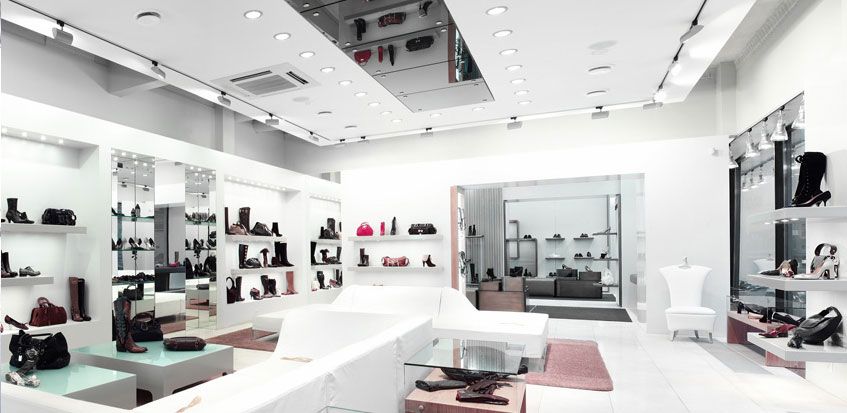In the challenging world of retail, the ambiance of a store can make or destroy the customer journey. Creating the perfect setting goes beyond just visual appeal; it plays a vital role in connecting with customers and ultimately drives sales. A well-executed retail fit-out ensures that all aspects, from layout to lighting, aligns with your brand image and communicates to your target audience. Understanding what a retail fit-out entails and its importance can set the stage for sustained success.
As the shopping landscape advances, so do the techniques and styles associated with store layouts. Whether you're starting a new business or redesigning an current location, having a thorough manual to retail fit-outs can navigate you through every stage of the journey. From creative design strategies that enhance customer engagement to the most recent developments expected in 2025, it's essential to remain knowledgeable and flexible. Come along as we delve into the different aspects of retail fit-out techniques that can elevate your shop, create unforgettable encounters, and ensure your enterprise thrives in a dynamic market.
Comprehending Retail Fit-Outs
Retail fit-outs are the process of converting a unrefined space into a usable and aesthetically pleasing environment for companies to function. This involves a cooperation between planning, construction, and branding to create a space that matches with the company's vision and improves the shopping experience for shoppers. A properly designed fit-out not only satisfies the operational needs of the business but also reflects its corporate identity, expressing crucial information through design elements like arrangement, color palettes, and fixtures.
The significance of retail fit-outs cannot be underestimated. They play a vital role in attracting customers and shaping their buying preferences. A thoughtfully designed space can inspire customers to spend more time in the store, causing increased sales and enhanced customer loyalty. Additionally, fit-outs can aid maximize the use of space, allowing for effective product displays and a seamless flow of traffic, ensuring that the customer's journey is both satisfying and efficient.
As retail environments evolve, so do fit-out trends and needs. Staying updated on current styles and tech advancements is crucial for businesses aiming to distinguish in a crowded market. From incorporating sustainable supplies to harnessing smart devices for a more interactive experience, the approach to retail fit-outs is always adapting. Recognizing these trends can enable businesses to make wise decisions that not only satisfy their current needs but also prepare their retail spaces.
A Retail Fitting Procedure
The retail fit-out process is a detailed process that transforms an unoccupied area into an fully functional commercial environment. First, it begins with a detailed assessment of the existing space, where key considerations such as design, lighting, and brand identity come into play. Planning is essential, as this phase involves working together with designers and architects to create a concept that matches the company's vision while enhancing customer interaction. Establishing a clear design brief that specifies preferences for resources, hues, and overall aesthetics will guide the project through the subsequent stages.
Once the design is completed, the construction phase kicks off. This is where the real fit-out is realized, involving a meticulous build-out of the space according to agreed plans. Ongoing communication with builders and project managers is critical during this phase to make sure the project stays on schedule and within budget. Managing deadlines efficiently helps to avoid common problems, such as delays or unexpected expenses, which can disrupt the effort and lead to frustration for all involved.
After the construction and installation are complete, the final touches and quality checks occur before the official opening. This stage includes ensuring that all installations, fittings, and displays are properly installed and functional. An soft opening can be advantageous, allowing for adjustments based on customer responses before the full-scale launch. By adhering to a structured retail fit-out process, companies can create welcoming and efficient retail spaces that enhance the customer experience and contribute to increased sales.
Financing and Financing Your Fit-Out
Planning for your retail fit-out is a key step that can influence the success of your project. Begin by outlining all potential costs, which include supplies, labor, permits, and design costs. By creating a detailed budget, you can prioritize essential elements while allowing for flexibility in less critical areas. Think about also allocating a contingency fund to cover unexpected expenses that may occur during the renovation process. This proactive approach will enable you to oversee your finances more efficiently and reduce the risk of overspending.

Financing options for your retail fit-out can vary widely depending on your company size and financial situation. https://notes.io/wX7Fd might explore options like microloans, public funding, or using self-funding. For larger enterprises, conventional bank loans and lines of credit can be available paths. Moreover, some retailers may gain advantage from partnerships with suppliers or leasing contracts, which can help spread costs over time. Investigating all potential funding avenues will enable you to choose the best option tailored to your specific needs.
As you manage your retail fit-out project, being mindful of potential undisclosed expenses can significantly affect your overall budget. Factors such as holdups in building, modifications in design, and unexpected regulatory fees can influence your financial plan. To avoid these issues, maintain clear communication with your contractors and have a thorough understanding of the schedule and extent of tasks involved. Regularly reviewing your budget and adapting as needed will ensure that you stay on track and can make informed decisions throughout the fit-out journey.
